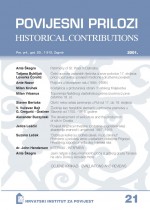Obrti i neka ostala zanimanja u Puli od 17. do 19. stoljeća
Crafts and some other professions in Pula from the 17th - 19th century
Author(s): Slaven BertošaSubject(s): History
Published by: Hrvatski institut za povijest
Summary/Abstract: The historical sources on the crafts and some other professions in the city of Pula are very scarce. We can find some fragments on this subject in the reports of the governors of Pula that were sent to the government in Venice. They contain the information on the lack of some of the specialized professions in the town, under defined circumstances. This is the reason we can understand that some people of those professions settled in Pula upon the order by the Senate, although there were also some cases of self-initiative arrivals. We can find out a lot about the craftsmen and some other professionals from the registry books of the city of Pula (this paper describes the period from the beginning of the 17th century until the end of the 19th century). These are the data linked to the four moments in life recorded in the mentioned sources: wedding, baptizing, confirmation and death. The craftsmen and members of some other professions are mentioned often as persons who married in Pula, or were witnesses to a marriage. Very often they were parents of a baptized child or a confirmand, or were godfathers in the mentioned ceremonies. Very often they died and were buried in Pula. Generally speaking, the largest number of craftsmen existed in the period until the 1660s. The number slightly decreased later on, yet it remained rather unchanged. The registry books in Pula are rich in information on the craftsmen of various crafts (stonemasons, blacksmiths, tailors, masons, weavers, shoemakers, linen merchants, mattress makers, goldsmiths, butchers, coopers, carpenters, locksmiths, chimney sweepers, millers, sausage makers etc.) When comparing the stage of development of the crafts’ production, the most important town in the south of Istria did not differ much from other towns in Istria. The craft products were in the first place intended for the domestic market, but it can be assumed that the craftsmen of Pula exported a portion of their products. This is how the question arises to what extent the products were meant for the domestic market, and to what extent for export. Since the registry books offer no answer to that question - and the known sources are also “quiet” about that - this issue remains open. Other professions entered in the registry books are shepherds, gardeners, painters, cooks, farmers, sailors, shipowners, tar salesmen, workers, innkeepers, coachmen, merchants, coffee-house owners, monopoly-holders, architects, managers of saltmines, harbor masters, owners of coal storages etc. Their number increased constantly, so in 1815 there were three times more professionals than in 1613. Besides, among the professions in Pula, despite its numerousness and diversity, it was not the craftsmen who were predominant, but other professions that were not handicrafts.
Journal: Povijesni prilozi
- Issue Year: 2001
- Issue No: 21
- Page Range: 121-160
- Page Count: 40
- Language: Croatian

